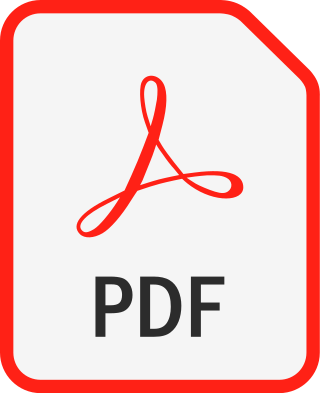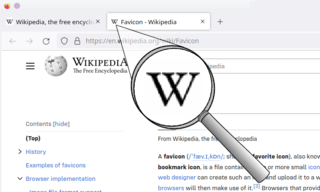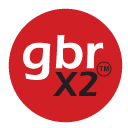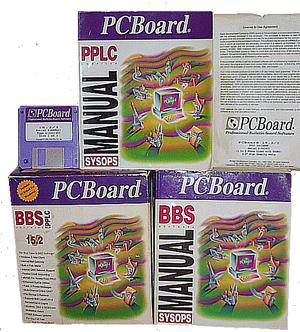
Adobe Flash is a multimedia software platform used for production of animations, rich internet applications, desktop applications, mobile apps, mobile games, and embedded web browser video players.

Portable Document Format (PDF), standardized as ISO 32000, is a file format developed by Adobe in 1992 to present documents, including text formatting and images, in a manner independent of application software, hardware, and operating systems. Based on the PostScript language, each PDF file encapsulates a complete description of a fixed-layout flat document, including the text, fonts, vector graphics, raster images and other information needed to display it. PDF has its roots in "The Camelot Project" initiated by Adobe co-founder John Warnock in 1991. PDF was standardized as ISO 32000 in 2008. The last edition as ISO 32000-2:2020 was published in December 2020.
Shareware is a type of proprietary software that is initially shared by the owner for trial use at little or no cost. Often the software has limited functionality or incomplete documentation until the user sends payment to the software developer. Shareware is often offered as a download from a website. Shareware differs from freeware, which is fully-featured software distributed at no cost to the user but without source code being made available; and free and open-source software, in which the source code is freely available for anyone to inspect and alter.

A favicon, also known as a shortcut icon, website icon, tab icon, URL icon, or bookmark icon, is a file containing one or more small icons associated with a particular website or web page. A web designer can create such an icon and upload it to a website by several means, and graphical web browsers will then make use of it. Browsers that provide favicon support typically display a page's favicon in the browser's address bar and next to the page's name in a list of bookmarks. Browsers that support a tabbed document interface typically show a page's favicon next to the page's title on the tab, and site-specific browsers use the favicon as a desktop icon.
Jim Knopf, nicknamed Jim Button, was considered by many to be one of the "fathers" of shareware. As an IBM employee, he wrote a program to help with a local church congregation. When demand for his program consumed too much of his time, he quit IBM and created Buttonware. He released his first program, PC-File, in late 1982 as "user supported software". He has been quoted as saying this expression not only reflected the optional payment model, but also that comments from users drove the development of later releases.
TextPad is a text editor for Microsoft Windows developed by Helios Software Solutions. It is currently in its eighth major version. TextPad was initially released in 1992 as shareware, with users requested to pay a registration fee to support future development. As of 1996 the company was an associate member of the Association of Shareware Professionals. By 1998 the company was pointing out that the editor was "shareware " and payment was necessary to continue to use it.
The Open Document Format for Office Applications (ODF), also known as OpenDocument, is an open file format for word processing documents, spreadsheets, presentations and graphics and using ZIP-compressed XML files. It was developed with the aim of providing an open, XML-based file format specification for office applications.

The Gerber format is an open, ASCII, vector format for printed circuit board (PCB) designs. It is the de facto standard used by PCB industry software to describe the printed circuit board images: copper layers, solder mask, legend, drill data, etc. The standard file extension is .GBR or .gbr though other extensions like .GB, .geb or .gerber are also used.
FILE_ID.DIZ is a plain-text file containing a brief description of the content of archive to which it belongs. Such files were originally used in archives distributed through bulletin board systems (BBSes) and is still used in the warez scene. FILE_ID stands for "file identification". DIZ stands for "description in zipfile".
PAD or Portable Application Description is a machine-readable document format and specification designed by the Association of Software Professionals and introduced in 1998. The PAD specification is utilized by more than 6,000 software publishers of downloadable applications covering the Windows, OS X, and Linux operating systems. PAD is a worldwide registered trademark of the Association of Software Professionals and managed by the ASP PAD Committee.
The Construction Specifications Institute (CSI) is a United States national association of more than 8,000 construction industry professionals who are experts in building construction and the materials used therein. The institute is dedicated to improving the communication of construction information through a diversified membership base of allied professionals involved in the creation and management of the built environment, continuous development and transformation of standards and formats, education and certification of professionals to improve project delivery processes, and creation of practice tools to assist users throughout the facility life-cycle. The work of CSI is currently focused in three areas being standards and publications, construction industry professional certifications, and continuing education for construction professionals.

PCBoard (PCB) was a bulletin board system (BBS) application first introduced for DOS in 1983 by Clark Development Company. Clark Development was founded by Fred Clark. PCBoard was one of the first commercial BBS packages for DOS systems, and was considered one of the "high end" packages during the rapid expansion of BBS systems in the early 1990s. Like many BBS companies, the rise of the Internet starting around 1994 led to serious downturns in fortunes, and Clark Development went bankrupt in 1997. Most PCB sales were of two-line licenses; additional line licenses were also available.
The Recreational Software Advisory Council (RSAC) was an independent, non-profit organization founded in the U.S. in 1994 by the Software Publishers Association as well as six other industry leaders in response to video game controversy and threats of government regulation.

RemoteAccess is a DOS Bulletin Board System (BBS) software package written by Andrew Milner and published by his company Wantree Development in Australia. RemoteAccess was written in Turbo Pascal with some Assembly Language routines. RemoteAccess began in 1989 as a clone of QuickBBS by Adam Hudson. It was released under the shareware concept in 1990 and became popular in North America, Europe, UK, South Africa, and the South Pacific. Initially the main advantage over QuickBBS was its ability to run multiple nodes under Microsoft Windows, Quarterdeck's DESQview and OS/2. RA could also operate over a network or even a combination of network and multitasking operating systems to provide multiple "nodes per station" capabilities.

Nelson Ford was one of the founders of shareware software distribution, of HAL-PC, of the Association of Shareware Professionals, founder of the Public (software) Library, the largest commercial library of public domain and shareware software, and of the first major order processing service for shareware programmers. In 1984, through his shareware column in Softalk-PC magazine, he was responsible for standardizing the use of the term shareware for free-trial software. He wrote several shareware games: CardShark Hearts, CardShark Spades, and CardShark Bridge Tutor. Nelson Ford was inducted into the Shareware Hall Of Fame in August 2001.
A specification often refers to a set of documented requirements to be satisfied by a material, design, product, or service. A specification is often a type of technical standard.
Association for Standardization of Automation and Measuring Systems or ASAM is an incorporated association under German law. Its members are primarily international car manufacturers, suppliers and engineering service providers from the automotive industry. The association coordinates the development of technical standards, which are developed by working groups composed of experts from its member companies. ASAM pursues the vision that the tools of a development process chain can be freely interconnected and allow a seamless exchange of data. The standards define protocols, data models, file formats and application programming interfaces (APIs) for the use in the development and testing of automotive electronic control units. A large amount of popular tools in the areas of simulation, measurement, calibration and test automation are compliant to ASAM standards. Compliance shall guarantee interoperability of tools from different vendors, allow data exchange without the need for converters, and facilitate the exchange of unambiguous specification between customers and suppliers.
PKWARE, Inc. is an enterprise data protection software company that provides discovery, classification, masking and encryption software, along with data compression software, used by organizations in financial services, manufacturing, military, healthcare and government. The company's products are intended to assist other companies in complying with various data protection regulations such as GDPR and CCPA. The company is headquartered in Milwaukee, Wisconsin with additional offices in the US, UK, and India.

An application programming interface (API) is a way for two or more computer programs to communicate with each other. It is a type of software interface, offering a service to other pieces of software. A document or standard that describes how to build or use such a connection or interface is called an API specification. A computer system that meets this standard is said to implement or expose an API. The term API may refer either to the specification or to the implementation. Whereas a system's user interface dictates how its end-users interact with the system in question, its API dictates how to write code that takes advantage of that system's capabilities.
The following outline is provided as an overview of and topical guide to software development:




